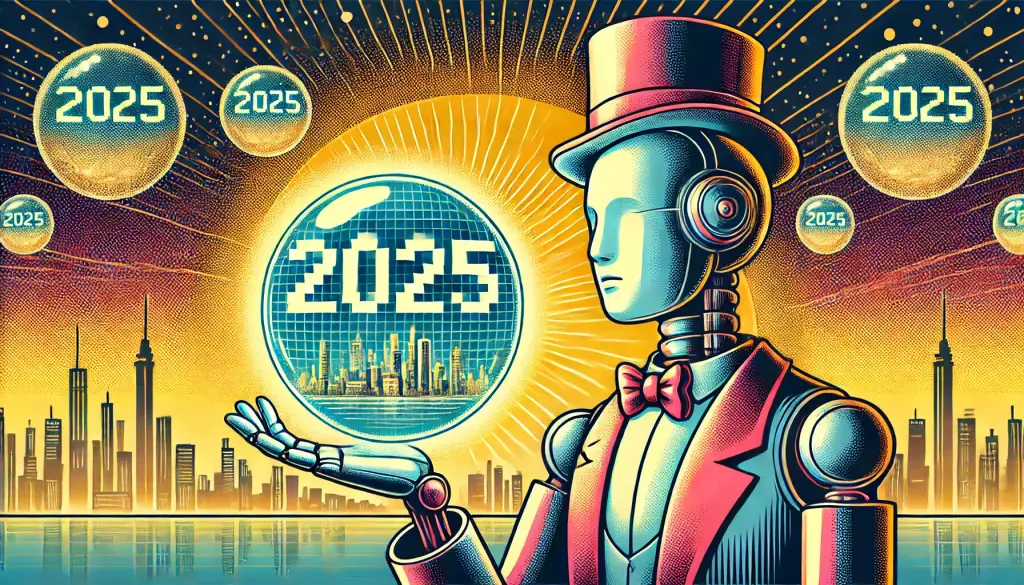Artificial Intelligence (AI) has reached an inflection point in 2024, characterized by unprecedented advancements in commercialization and application. As we evaluate the milestones of this year, it is evident that the progress in artificial intelligence has not just continued but accelerated, further embedding these technologies into various aspects of daily life and business practices. The remarkable growth and innovation we’ve witnessed invites a closer look at the year’s key developments, the companies driving the transformation, and the future implications for technology and society.
The launch of ChatGPT in late 2022 sparked a renaissance in the domain of Large Language Models (LLMs), and this momentum has continued throughout 2024. Not only did established tech giants like Microsoft and Google rapidly enhance their AI capabilities, but the playing field also expanded to embrace numerous startups and individual developers. This democratization of technology has led to a veritable explosion of new LLMs, each iterating on the capabilities and performance of their predecessors.
Recognizably, OpenAI has remained at the forefront, launching the o1 and o3 models that have proven exceptionally powerful for tasks requiring nuanced reasoning and complexity, such as scientific inquiries and coding tasks. The o3 model, noted for its increased processing ability, promises a substantial leap in accuracy, although it is scheduled for a delayed public release until 2025. This strategic approach highlights OpenAI’s commitment to refining its offerings rather than rushing to market with incomplete solutions.
2024 was also marked by the emergence of innovative technologies that extend beyond the traditional Transformer architecture, signaling a diversification in AI methodologies. Liquid AI’s introduction of Liquid Foundation Models exemplifies such progress, presenting alternatives that could reshape how we view model training and deployment. The convergence of diverse approaches emphasizes the evolution of AI as a communal pursuit, thriving on collaborative experimentation while pushing boundaries.
Moreover, the concept of “agentic” AI has gained traction throughout the year. Companies are devising intelligent agents that can autonomously execute tasks and manage workflows with minimal human input. This shift represents a significant transition from conventional user-input models to systems capable of straightforward operator functions across various operational contexts. Enterprises are increasingly recognizing the value this brings in terms of efficiency and functionality.
Among the pivotal features released this year are enhancements to existing frameworks and entirely new platforms. OpenAI’s introduction of the ChatGPT Search tool marks a noteworthy evolution in real-time information retrieval capabilities, positioning it as a direct competitor to conventional search engines like Google and Bing. This has profound implications, not merely enhancing user accessibility to information but also impacting how people interact with AI-driven search functionalities.
In a bid to improve workflow and user engagement, OpenAI’s Canvas and Sora highlight the continued integration of AI into creative fields. The Canvas allows users to leverage AI within a more interactive workspace, while Sora’s launch in the video generation sphere has attracted considerable attention for its unique interface and rich feature set. These tools reflect a growing recognition of AI’s utility not just in conventional applications but also in creative endeavors, expanding AI’s utility into diverse sectors.
Global Competition and Collaboration
Meta has emerged as a strong contender in the AI landscape, particularly with its Llama 3 and subsequent models, which foster competition in the open-source domain. Offering robust performance at reduced computational costs, these developments facilitate more extensive deployments in enterprise scenarios, making formidable AI capabilities accessible to a broader audience.
Meanwhile, advancements from international organizations, like Alibaba’s and Google’s Gemini models, emphasize the vital role of global players in AI evolution. Companies are rapidly iterating and refining their products, continually raising benchmarks in performance, usability, and application. This healthy competition not only enhances innovation but also stimulates dialogue around ethical AI development and application.
Looking Ahead: Future Impact on Society and Industries
As we transition into 2025, the ramifications of this year’s advancements will likely permeate various sectors, indicating a transformative wave of AI-generated content spanning business and consumer domains. The proliferation of AI technologies will reshape industries, streamline processes, and personalize user experiences in ways previously deemed unattainable.
Furthermore, the integration of generative AI into robotics foreshadows a potential revolution in automation, offering new models for human-robot interaction. These trends signal that the AI landscape is not merely about technological advancement; it encompasses significant cultural shifts, ethical considerations, and implications for the workforce as machines increasingly assume roles traditionally held by humans.
2024 stands as a landmark year in artificial intelligence’s trajectory. The progress achieved is a testament to the relentless pursuit of innovation and a glimpse into a future where AI becomes integral to everyday life. As we look ahead, the anticipation of continued advancements fuels excitement, with the promise that forthcoming innovations will play a pivotal role in shaping society.

